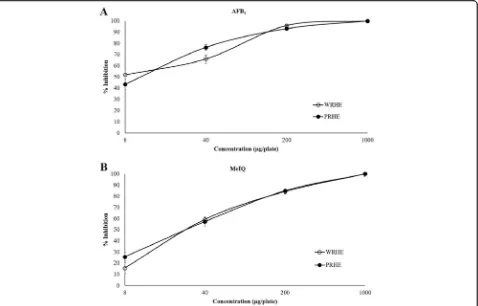Inhibitory effect of purple rice husk extract on AFB1 induced micronucleus formation in rat liver through modulation of xenobiotic metabolizing enzymes
Full text
Figure




Related documents
Does the bank have any tools/ methods in place to determine the effec- tiveness of the Corporate Social Responsibility Programme.. There are methods in place but the findings are
In this review, we gathered recent researches about this relationship to have a comprehensive look to effect of gut microbiota and diet probiotics in
Diagnostic studies have reported highly variable sensitivity and speci ficity when using the CD4/CD8 ratio, prompting us to perform what we believe to be the first meta-analysis to
Online transactions are these days turn out to be extremely normal and there are different attacks exhibit behind this. In these sorts of different attacks, phishing
Write about the condition of the iron industry in England before the invention of blast furnace.. And how did the invention of the blast furnace revolutionize the
Field experiments were conducted during three consecutive kharif seasons of research farm of Rajasthan Agricultural Research Institute, Durgapura, Jaipur to study the effect of
To define the different phases of the SPT and the rela- tive threshold-based algorithm, a combination of kinetic and kinematic data was used, namely the norm of the time derivative
The existing rate structure is not sufficient to cover costs and current debt service requirements, but the rate deficit cannot be borne by the ratepayers alone. Closing the
